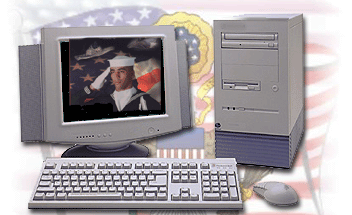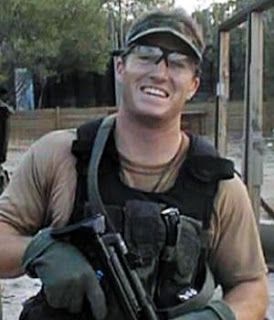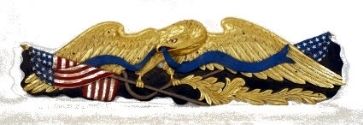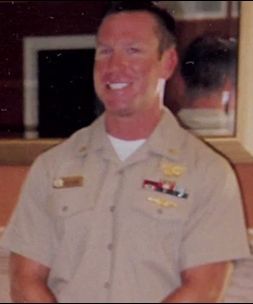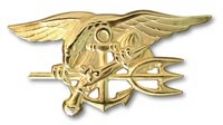~ Hall of Heroes ~Mitchell Red Cloud, Jr.
Story from this website. |
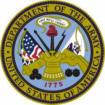
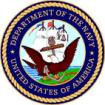 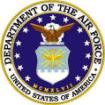 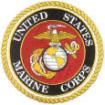 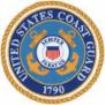 |
Following the Japanese surrender ending World War II on September 2, 1945, the U.S. Army was reduced to just 10 divisions, with four of them, the 7th, 24th and 25th Infantry divisions and the 1st Cavalry Division, stationed in Japan on occupation duty. With the war over, Americans generally thought there was no real need to keep more troops on active duty — that is, until 0400 hours on June 25, 1950, when Communist troops of the North Korean People’s Army (NKPA) surged over the 38th parallel to invade South Korea.
The 24th Infantry Division, stationed on the Japanese island of Kyushu, was already on alert on June 30, when President Harry S. Truman ordered it to South Korea. Among its soldiers was an American Indian World War II Marine veteran, Pfc Mitchell Red Cloud Jr.
Born on July 2, 1924, in Hatfield, Wis., Mitchell was a member of the Ho-Chunk (Winnebago) Nation and the eldest of three sons born to Mitchell Red Cloud Sr. and Lillian Winneshiek. “During his younger years he liked to hunt, fish and all the other things young boys liked to do,” recalled his nephew, Merlin Red Cloud. “Friends and relatives tell that he was easygoing and fun loving, and no one could recall him showing any anger.”
At age 16, Mitchell Jr. dropped out of high school and, with his father’s permission, enlisted in the U.S. Marine Corps on August 11, 1941. His Ho-Chunk lifestyle, his hunting skills and his great physical shape helped him excel as a Marine. When the Japanese attacked Pearl Harbor on December 7, Red Cloud was stationed at Camp Elliott in San Diego in the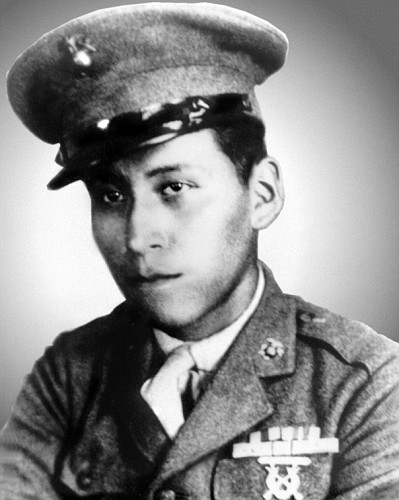 2nd Battalion, 9th Marines, 2nd Marine Division. His skills eventually gave him easy entry into Lt. Col. Evans Carlson’s 2nd Marine Raider Battalion, also known as Carlson’s Raiders. 2nd Battalion, 9th Marines, 2nd Marine Division. His skills eventually gave him easy entry into Lt. Col. Evans Carlson’s 2nd Marine Raider Battalion, also known as Carlson’s Raiders.
On September 6, 1942, the entire 2nd Marine Raider Battalion was on its way to Espiritu Santo in the New Hebrides group. On November 4, 1942, the Raiders arrived at Guadalcanal, their mission to silence artillery that was firing on Henderson Field. After a month-long trek through the jungles, the Raiders found and eliminated the enemy artillery. They also killed nearly 500 Japanese soldiers, destroyed enemy supplies and severed the enemy’s lines of communication. The battalion lost 19 men killed and 122 wounded in the course of the mission.
Like many of his comrades, Pfc Red Cloud brought back a very bad case of malaria, jaundice and a host of other tropical diseases. He lost 75 pounds, and on January 14, 1943, he was ordered home for evaluation. In February he was offered a medical discharge, which he declined. As soon as he was able, he returned to active duty, this time as a member of A Company, 29th Marines, 6th Marine Division. At Okinawa, on May 17, 1945, the war ended for Red Cloud with a Purple Heart when he took a bullet in his left shoulder.
“After receiving his honorable discharge from the Marine Corps, Red Cloud roamed Wisconsin, visiting relatives for about two years,” said Merlin Red Cloud. In 1948, Mitchell enlisted in the U.S. Army, and was sent to Japan. On July 3, 1950, he left for Korea and his second shooting war with E Company, 2nd Battalion, 19th Infantry Regiment, 24th Infantry Division.
Corporal Red Cloud, now 25, was older than many of the men alongside whom he served. He was also a decorated veteran. Officers and enlisted men alike looked up to him. “From stories that our veterans who served with Mitchell in Korea [told], Mitchell was a leader who was always good-hearted and kind towards the Korean people whom he was attempting to help,” said Merlin Red Cloud. “He traded his rations with his comrades for their candy, which he would give to the Korean children.”
By the end of September 1950, the breakout at Pusan and the U.N. landings at Inchon had thrown the NKPA into full retreat, and the United Nations forces in Korea, under General Douglas MacArthur, were approaching the Yalu River, North Korea’s border with Chinese Manchuria. In late October, however, Chinese Communist Forces (CCF) intervened in massive force on behalf of the faltering North Koreans. By November, plans were being made for the withdrawal of all U.N. troops in North Korea to below the Chongchon River. The bridgehead across the river was to be protected in case the U.N. troops were ordered to resume offensive action.
|
By November 2, the north bank of the Chongchon River was held by the 27th British Commonwealth Brigade and the 19th Infantry Regiment of the 24th Division. The two units were separated by a five-mile gap, supposedly patrolled constantly. On November 5, the Chinese began probing the U.N. forces’ defensive line, evading patrols and moving freely through the gap.
Warnings of the Chinese habit of attacking at night fell on deaf ears in many of the U.N. units. On the night of November 5, the Chinese followed field telephone lines that led to C Company of the 19th Infantry. Many of the Americans were caught and killed in their sleeping bags. Nearby, entrenched on Hill 123, E Company of the 19th was trying to hold its section of the Chongchon River line. Fortunately for that company, Corporal Red Cloud had heeded the warnings and stayed awake.
Quietly, about 1,000 infantrymen of the Chinese 355th Regiment infiltrated between the 2nd Battalion and the 27th Commonwealth Brigade. Red Cloud was positioned in a forward observation post at a point immediately in front of the E Company command post. From there, he was able to detect the Chinese when they launched their assault at about 3:20 a.m., under a nearly full moon. As the enemy charged from a brush-covered area, less than 100 feet from him, Red Cloud gave the 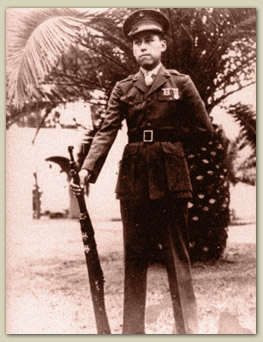 alarm to his fellow soldiers. Then, grabbing his Browning Automatic Rifle (BAR) and springing up from his place of concealment, Red Cloud emptied magazine after magazine into the charging Chinese troops at point-blank range. “His accurate and intense fire checked this assault and gained time for the company to consolidate its defense,” his citation read, also noting that even after he was shot twice in the chest and his assistant BAR man was killed, “With utter fearlessness he maintained his firing position until severely wounded by enemy fire.” alarm to his fellow soldiers. Then, grabbing his Browning Automatic Rifle (BAR) and springing up from his place of concealment, Red Cloud emptied magazine after magazine into the charging Chinese troops at point-blank range. “His accurate and intense fire checked this assault and gained time for the company to consolidate its defense,” his citation read, also noting that even after he was shot twice in the chest and his assistant BAR man was killed, “With utter fearlessness he maintained his firing position until severely wounded by enemy fire.”
Perry Woodley, the 2nd Platoon medic, rushed to Red Cloud’s foxhole and applied field dressings to his wounds. As Woodley went off to treat others on the hill, he could hear the bark of a BAR resume behind him. Red Cloud was hit again and called for aid. Woodley found him badly wounded and tried to get him off the hill, but Red Cloud refused further medical help and told Woodley to concentrate on getting the other wounded men to safety. “Corporal Red Cloud pulled himself to his feet,” the citation continued, “and wrapping his arm around a tree, continued his deadly fire again, until he was fatally wounded.” Under his covering fire, the rest of E Company began a fighting retreat from the hilltop to fortified positions 1,000 yards south of Hill 123. Red Cloud was reportedly struck by as many as eight bullets before dying. When his comrades went to retrieve his body the next day, they found “a string of dead Chinese soldiers” in front of him.
Red Cloud’s selfless and heroic act stopped the Chinese from overrunning E Company’s position and gained valuable time for reorganization and the evacuation of the wounded. In April 1951, at a ceremony at the Pentagon, in Washington, D.C., Corporal Mitchell Red Cloud Jr. was posthumously awarded the Medal of Honor, which was presented to his mother by General Omar N. Bradley. In 1955, Red Cloud’s remains were returned from the U.N. cemetery in Korea for burial, in accordance with the ancestral custom of his people, in Wisconsin.
On November 5, 2000, the 50th anniversary of Red Cloud’s death, the U.S. Department of Defense, Korean War Commemoration Committee, paid a visit to Black River Falls in the Ho-Chunk Nation. There it presented the Republic of Korea War Service Medal to his daughter, Annita Red Cloud.
Perhaps the most notable recognition given to Red Cloud for his deed besides the medal itself took place on August 7, 1999, when members of the Ho-Chunk Nation, along with dignitaries from the U.S. Army and Navy, stood on a dock in San Diego, Calif., for the launching of USNS Red Cloud, the fourth of seven Strategic Sealift Ships built since 1993 and named after Medal of Honor recipients. Among the attendees for the launching was Annita Red Cloud and Tris Yellowcloud, his granddaughter. Also present was Kenneth Kershaw, a member of E Company, 19th Infantry, who was on Hill 123 that morning. Kershaw expressed the simple essence of why he was there to honor his comrade: “If it were not for the alarm sounded by Mitchell Red Cloud, I would not be here today.”
This article was written by Dana Benner and originally published in the June 2006
issue of Military History magazine. For more great articles be sure to subscribe
to Military History magazine today! |
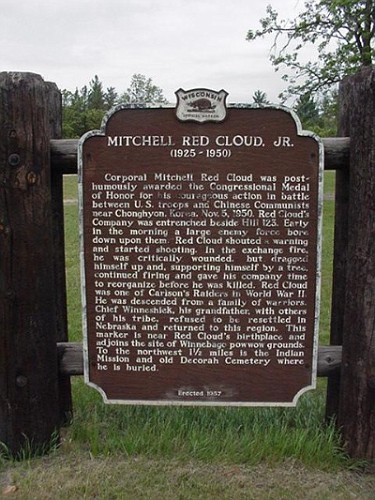 The President of the United States The President of the United States
in the name of The Congress
takes pleasure in presenting the
Medal of Honor
to
*RED CLOUD, MITCHELL, JR.
Rank and organization: Corporal, U S. Army, Company E, 19th Infantry Regiment, 24th Infantry Division.
Place and date: Near Chonghyon, Korea, 5 November 1950.
Entered service at: Merrilan Wis.
Born: 2 July 1924, Hatfield, Wis.
G.O. No.: 26, 25 April 1951.
Citation:
Cpl. Red Cloud, Company E, distinguished himself by conspicuous gallantry and intrepidity above and beyond the call of duty in action against the enemy. From his position on the point of a ridge immediately in front of the company command post he was the first to detect the approach of the Chinese Communist forces and give the alarm as the enemy charged from a brush-covered area less than 100 feet from him. Springing up he delivered devastating pointblank automatic rifle fire into the advancing enemy. His accurate and intense fire checked this assault and gained time for the company to consolidate its defense. With utter fearlessness he maintained his firing position until severely wounded by enemy fire. Refusing assistance he pulled himself to his feet and wrapping his arm around a tree continued his deadly fire again, until he was fatally wounded. This heroic act stopped the enemy from overrunning his company's position and gained time for reorganization and evacuation of the wounded. Cpl. Red Cloud's dauntless courage and gallant self-sacrifice reflects the highest credit upon himself and upholds the esteemed traditions of the U.S. Army.
Thank you, sir, for your service and sacrifice for our country!
|
|
Please remember the Canteen is here to honor, support and entertain our troops and their families. This is a politics-free zone! Thanks for helping us in our mission!
|
|















![]()

![]()

![]()

![]()

![]()

![]()





















![]()

